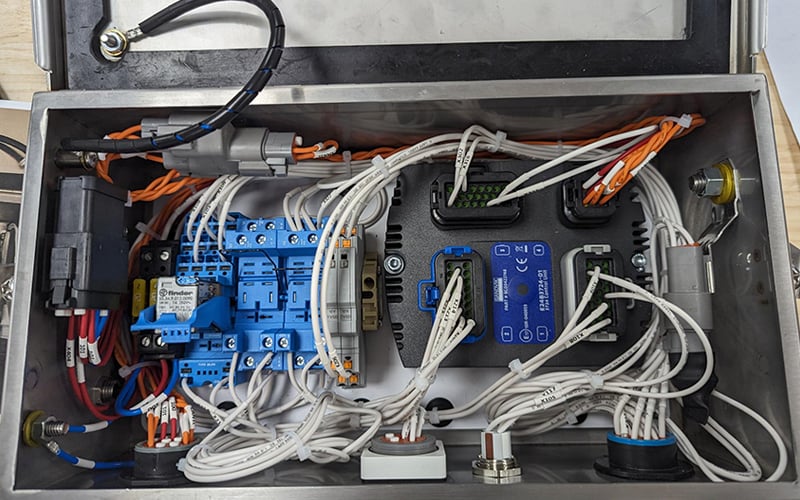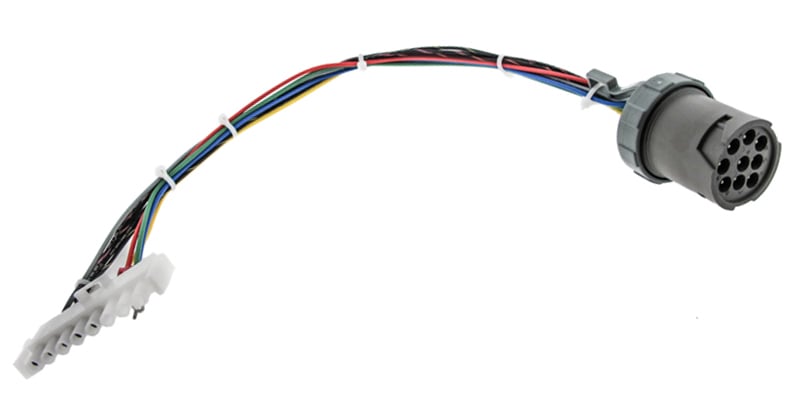In the ever-evolving world of electronics and engineering, the significance of custom cable assemblies are paramount. These vital components, often overshadowed by more prominent elements, play a crucial role in the functionality and efficiency of various systems.
Custom cable prototyping, therefore, emerges as a key step in the development of these components, ensuring their functionality, efficiency, and safety.
In this blog post, we will delve deeper into why prototyping is crucial for custom cables, the primary challenges faced during this process, and practical strategies for overcoming these challenges.
The Critical Role of Custom Cable Prototyping
Custom cable prototyping is far more than just a preliminary step in the journey of cable development; it's an integral, indispensable component of the entire cable design process. This phase goes beyond basic planning and serves as a vital bridge connecting conceptual designs with practical, real-world applications. It allows designers and engineers to test theories, refine details, and address potential issues, thereby ensuring that the final product not only meets but exceeds the required specifications and performance standards.
Custom cable prototyping is a critical step that leads to more efficient, reliable, and cost-effective cable assembly solutions. Let's explore why it's so important:
1. Confirming Correct Cable Length
Imagine designing a cable to be 20 inches long, only to realize during installation that it needs to be 24 inches to accommodate the actual routing path. This miscalculation can render the prototype useless. Without prototyping, you might end up with a large order of unusable scrap cables, leading to increased costs and wasted resources.

Routed cables require more length within enclosures to properly fit.
2. Ensuring Proper Connector Compatibility
Selecting the correct connectors is crucial. A mismatch can lead to functional failures or even damage to the connected devices. Prototyping helps ensure that the connectors not only physically fit together but also function as intended in the actual environment.

Many connector types are similar and look the same yet are not compatible with one another.
3. Verifying Electrical Functionality
A prototype wire harness must be rigorously tested for its ability to transmit data and operate within the specified frequencies, voltage, and current ratings. Particularly for cables with twisted and shielded pairs, prototyping is essential to verify that they perform as expected with no loss of signal integrity.

Automated electrical test equipment can spot mis-wired harnesses.
Challenges in Cable Prototyping and Strategies to Overcome Them
Navigating the prototyping phase in custom cable development often presents a variety of complex challenges, each requiring careful attention and innovative solutions. This phase, crucial in transitioning from theoretical designs such as 2D schematics and solid models to practical applications such as breadboards and cobbled-together harnesses, involves solving multiple program challenges with a finite amount of time and resources.
Engineering Matters
Design engineers must validate that the cable meets all necessary technical requirements, such as electrical performance and mechanical durability. To address these, thorough testing, iterative design adjustments, and the use of advanced simulation tools can be used to predict and rectify potential issues early. Once the actual product has been built, flex cycle testing can be performed to stress cable jackets subjecting them to thousands or millions of cycles until failure is observed. Don’t wait until a finished harness is built and ready, perform stress testing on the bulk wire far before overmolds and connectors are needed.
Sourcing Risk is Widespread
Material availability and supply chain constraints are significant issues, especially in times of global disruptions. Overcoming these involves building robust relationships with multiple suppliers and considering alternative materials or sources that meet required specifications. Supply chain managers can further mitigate these types of disruptions with a proactive approach to managing their supply base, given that prototyping wire harnesses is a far cry from the demands of full-rate harness production. Finding wire harness manufacturers that can support the prototyping phase as well as the production phase is vital to keeping costs and timelines under control.
Buyers should consider production sources from numerous physical locations around the globe, helping to ease the burden on logistics networks in the event of weather disruptions, natural disasters, or worse, political unrest or war. Wire manufacturers with both domestic and offshore capabilities offer customers the benefits of local assembly, storage, and management with the perks of low-cost offshore sourcing. Epec’s unique business model and diversified approach to manufacturing embodies this concept entirely.
Don’t Waste Money Early On
Cost management and budget constraints are inherent in prototyping, particularly with unique or high-performance specialty materials. Whether it’s surviving extremely high temperatures, operating after exposure to harsh chemicals, or passing a CISPR radiated emissions test, the odds are that several prototypes will be made during the product development lifecycle. Not all these prototypes need to use the highest-performing and most expensive connectors! Save the expensive, 16-week lead-time connectors for the final prototype versions and use these coveted items for when it really matters.
By focusing on designing prototypes with a cost-effective approach, prioritizing essential features, and using off-the-shelf components where possible, engineers can mitigate most financial challenges early on in prototyping. Time-to-market pressures require a balance between thorough prototyping and the urgency of market entry. Efficient project management and adopting agile methodologies can accelerate the prototyping process without quality compromises.
Compliance with standards and regulations is critical, necessitating an up-to-date understanding of relevant industry standards and integrating compliance checks into the prototyping process. But do you really need this high-performance wire jacket material for a few mock-up test units?

Single-conductor wires usually can replace multiconductor wires during prototyping.
Strategies and Considerations to Successful Cable Prototyping
- Defining the Scope of Prototypes: Clear definition of what the prototype is intended to achieve is crucial. Understanding which features are essential and which can be temporarily set aside helps in focusing the prototyping efforts effectively.
- Create Production-Worthy Prototypes: With appropriate planning and budgeting, creating prototypes that closely resemble the final product is achievable. This step is essential for testing under real-world conditions.
- Minimum Viable Product (MVP) Approach: In scenarios where time and budget are constraints, focusing on creating an MVP – a prototype with the most essential functionalities – is a practical approach.
- Flexibility and Proactivity: Being open to alternative solutions and starting discussions with experts early in the design process can lead to more successful prototyping outcomes. For instance, a consultation with an Epec engineer can provide insights into feasible options and solutions tailored to specific needs.
- Research What Has Been Successful: Reach out to an industry expert, or a colleague with real-world experience in a given wire technology. Study examples where custom cable prototyping has either succeeded or faced challenges as this can provide deeper insights into this process. For instance, research case studies where a particular type of connector was replaced due to unavailability and how it impacted the overall design and functionality of the cable.
- Get With the Times: When it seems as though all new hires own their own hobbyist 3-D printing systems, companies should embrace 3-D printing as this represents a low-cost and ultra-fast way to make product. 3D print systems can be used to simulate complex overmolded features in a fraction of the time and cost. However, these 3D printed materials won’t always behave the same as the production materials, meaningful data can still be gathered to aid the project. Understanding how emerging technologies and industry trends are influencing cable design and prototyping can offer a competitive advantage.
Summary
Custom cable prototyping is an intricate, yet indispensable part of cable design and production. By thoroughly understanding its importance, acknowledging, and preparing for the challenges, and implementing effective mitigation strategies, engineers and designers can navigate this process with greater confidence and efficiency. This leads to the development of successful, functional, and reliable final products that meet the exacting demands of diverse applications.
Key Takeaways
- Prototyping prevents costly mistakes: Building early samples validates cable length, connector compatibility, and electrical performance, avoiding wasted production runs or unusable assemblies.
- Engineering validation is essential: Stress tests such as flex cycle testing and electrical verification ensure durability and performance before moving to final builds.
- Supply chain stability impacts prototyping success: Material availability and sourcing risks must be considered, with suppliers that can handle both prototyping and production phases offering the most reliable support.
- Cost management should be strategic: Using off-the-shelf or lower-cost components early and saving expensive or long lead-time parts for final prototypes, balances budgets with design validation needs.
- Agility and modern tools improve outcomes: Applying MVP principles, consulting experts, and using technologies like 3D printing for overmold simulations can accelerate prototyping while still generating meaningful data.
















